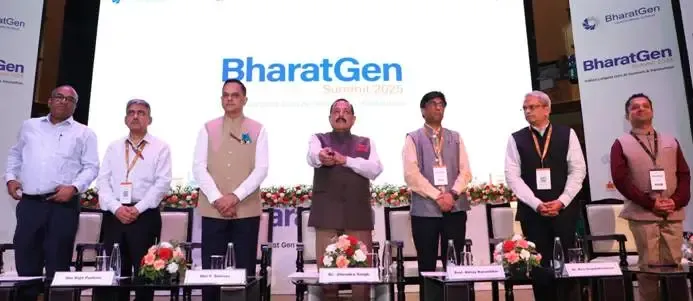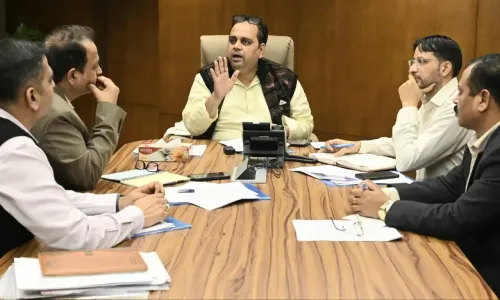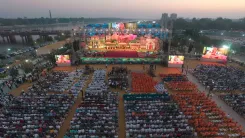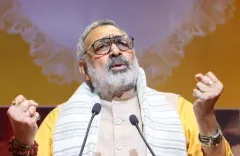What is BharatGen? Centre's New Initiative for Ethical, Inclusive AI

Synopsis
Key Takeaways
- BharatGen is designed for Indian languages.
- The initiative promotes ethical and inclusive AI.
- Supports sectors like healthcare and education.
- Incorporates text, speech, and image processing.
- Aligns with India's vision for technological advancement.
New Delhi, June 2 (NationPress) The Union government unveiled BharatGen on Monday – a revolutionary large language model (LLM) specifically designed for Indian languages, aimed at fostering ethical, inclusive, and multilingual Artificial Intelligence (AI).
The launch took place at the BharatGen Summit, which stands as India’s largest gathering for generative AI and LLMs, led by Union Minister of State (Independent Charge) for Science and Technology, Dr. Jitendra Singh.
This innovative platform merges text, speech, and image processing, providing seamless AI solutions across 22 Indian languages.
According to Singh, BharatGen embodies a national mission to develop AI that is ethical, inclusive, multilingual, and firmly aligned with Indian values and culture.
“This initiative will bolster essential sectors like healthcare, education, agriculture, and governance, offering region-specific AI solutions that resonate with every Indian,” Singh elaborated.
The goal of BharatGen is to transform AI development throughout India’s diverse linguistic and cultural landscape.
Supported by the Department of Science and Technology (DST), this initiative collaborates with a strong consortium of esteemed academic institutions, specialists, and innovators.
Singh also highlighted AI-driven telemedicine services, where an AI doctor communicates fluently in the patient’s native tongue.
“This not only cultivates trust but also has a placebo-like psychological impact, leading to improved care in remote areas linked to super-specialty hospitals across India,” he mentioned.
Furthermore, Singh noted that BharatGen aligns with Prime Minister Narendra Modi’s vision of “India's Techade,” focusing on both innovation and inclusion.
He celebrated India’s advancements in AI as a global benchmark, mentioning CPGRAMS, which has become a case study for various countries as a model for grievance redressal systems.
Initiated under the National Mission on Interdisciplinary Cyber-Physical Systems (NM-ICPS), BharatGen is being realized through a network of 25 Technology Innovation Hubs (TIHs), four of which have been upgraded to Technology Translational Research Parks (TTRPs).
The Mission is structured around four core pillars: technology development, entrepreneurship, human resource development, and international collaboration.










